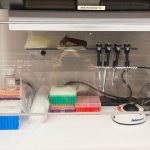Columbia Basin water data hub preparing for April launch
Monitoring Collaborative update
The Columbia Basin Water Monitoring Collaborative database is in the final stages of development and testing before its launch as the collective hub of Columbia Basin-relevant water data collected by the water monitoring groups in the Basin. This information will help to provide better understanding of the 10 watershed subregions in the Columbia Basin and to support improved watershed management by decision makers .
The anticipated launch date is for April 30, 2020. Keep an eye on our website and social media for the most current updates.
Fresh Water Data Commons pilot project
As part of the Monitoring Collaborative, we are working on the Fresh Water Data Commons pilot project within our Supercluster Innovation Fund partnership within our Supercluster Innovation Fund partnership. The goal of this project is to collect water data in a cost-effective, real-time, and scalable manner then use that data to understand the water balance in ecosystems and stay abreast of water availability issues in different regions as they occur.
The Fresh Water Data Commons pilot project will ground truth a sub-basin water balance model by placing a system of collection devices in a rural area of the Columbia Basin to test collecting, storing and analyzing data in real-time. By replacing static data collection with real-time data collection and analytics, the accuracy of modelling can be determined to inform machine learning. This real-time data will provide the opportunity to make water management decisions using the most current information available across all sectors including government, First Nations, industry, non-governmental organizations (NGOs), and community-based monitoring groups.
In addition to contributing data to the Columbia Basin’s water data hub, the Fresh Water Data Commons is assisting the Monitoring Collaborative with some of the development of its open source data centre.
Targeted eDNA
Living Lakes team members will also be involved in an Environmental DNA (eDNA) research component of the project that will assist with further validation of this emerging technology.
For this eDNA research component, Living Lakes Canada will be working closely with local partner organizations and the University of Victoria eDNA Helbing Lab.
Animals slough off DNA into their immediate environment through skin, mucus, feces, etc. This eDNA can be captured by properly filtering a sample of water and analyzing it in a lab. Living Lakes Canada staff will be collecting water samples in strategic locations at the study sites to determine the spatial extent of a select group of target species. These samples will be filtered and sent to the University of Victoria, where they will be analyzed in the Helbing Lab to determine presence or absence of the predetermined target species.
The eDNA data will be shared with the partner organization in order to offer more information on the effectiveness of local restoration or monitoring projects while improving eDNA research techniques.
To learn more, contact Program Manager Raegan Mallison at raegan@livinglakescanada.ca.





